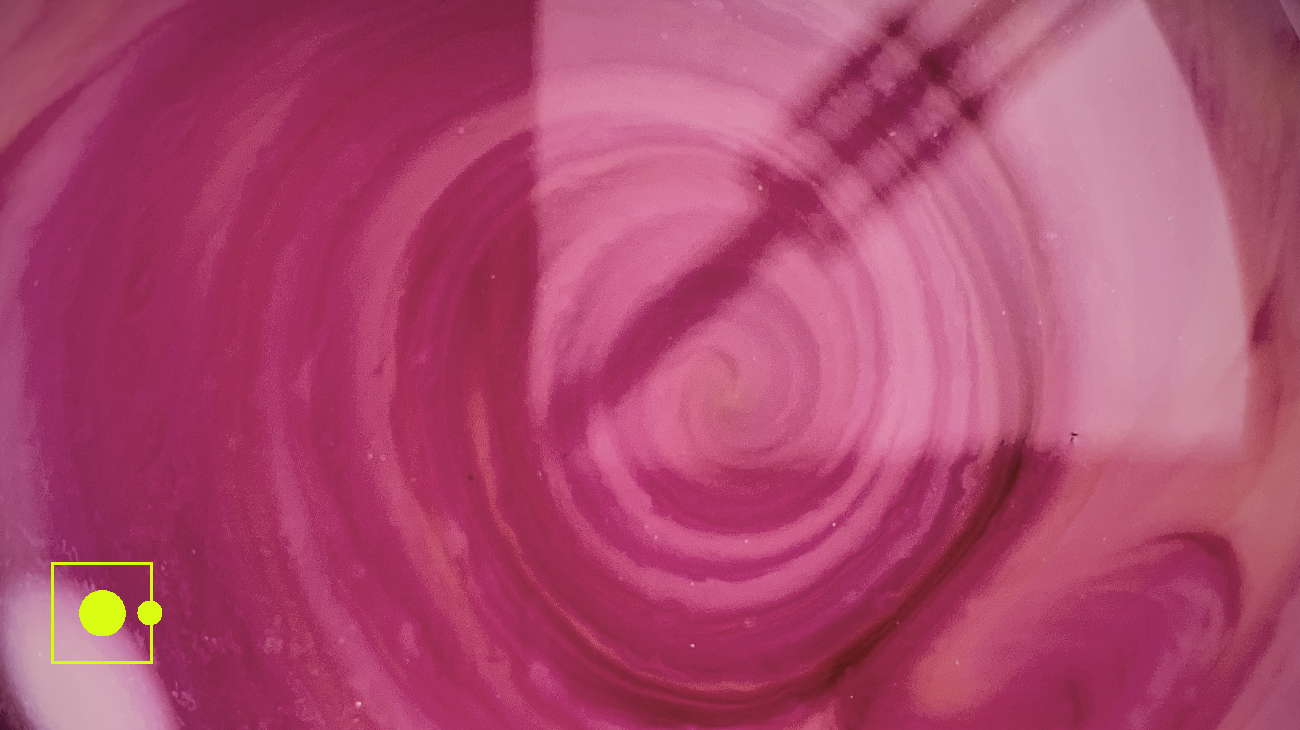
TATTOO INKS: MYTHS AND LEGENDS, TRUE OR FALSE
Everything you need to know to face a tattoo like a hypochondriac
INTRODUCTION:
I know I’m stepping into a minefield
I know there are a thousand strange and absurd articles on the internet that say all sorts of things
And this is just one more article
And I also know that I am nobody, just a tattoo artist with 17 years of experience in the industry and about 84% of my body tattooed, more or less
But this topic is very important to me
And I decided to start my “HYPOCHONDRIAC-PROOF TATTOO COLUMN” with this giant chapter full of questions. And I have a very simple way to explain everything to you. Then you can decide whether you like what I say or not and whether you can handle it or not
Are you ready? Let’s go!
In this article, we will analyze the following questions:
- Are tattoo inks hypoallergenic?
- Is it better to use organic or inorganic tattoo ink?
- Do biologic inks for tattoos exist?
- Should I choose vegan ink?
- What if I’m allergic to nickel, can I get a tattoo?
- Are tattoo inks nickel-free?
- Are you an allergic person and afraid?
- Does any of this mean that it is a semi-permanent ink?
- Tips & tricks for hypochondriacs

!BUT!
The first fundamental question to ask when we seek answers to our existential doubts about inks currently (in 2021) used for tattoos is:
What the heck is tattoo ink?
What does tattoo ink contain?
Okay, a very fair question.
Tattoo ink is made up of:
Coloring pigment – usually in powder form and of various origins
Diluted in a liquid that allows it to be injected under the skin – also known as a carrier – usually simple distilled water
Sometimes with a little alcohol to facilitate its preservation over time
Sometimes with a thickener, like glycerin, so that the ink is not completely liquid like water and is therefore easier to use for tattooing (it adheres more to the needle)
Now, let’s pretend for a moment that you got the wrong article and we are not talking about tattoo inks.
Let’s start asking ourselves questions and finding answers by picking up a dictionary and looking up the meanings of the adjectives used to describe inks.
Let’s analyze them so that we can understand everything quickly.
HYPOALLERGENIC
/ˌhaɪpoʊəˈlɜːrdʒɪk/
That does not cause allergies.
In reality, no substance in the world is completely hypoallergenic because hypersensitivities can occur to anything.
Therefore, tattoo inks are not hypoallergenic either. 🙂

NICKEL-FREE
Products in which Nickel is present in very low amounts (less than 1ppm).
It is not possible to define a product as completely Nickel-Free (just like there are no completely allergen-free substances) because Nickel is an element present in nature practically everywhere (including inside the human body), and where it is not present, it can absorb a small amount from contact with the metal alloys of the machines used to make it or from the plastics in which it is stored.
It is possible to test products to know how much Nickel they contain, but it is not mandatory by law, also because it is a very difficult test to perform.
!BUT!
If you are allergic or intolerant to Nickel (systemic or contact), you probably already know it because Nickel is very common in nature, and you constantly come into contact with it.
The degree of tolerance to Nickel varies from person to person, and not everyone reacts in the same way, even among those who suffer from SNAS (Systemic Nickel Allergy Syndrome).
Certified CEE tattoo inks (the only ones authorized in Italy) are considered “Nickel-Free” because if they have minimal traces of Nickel (less than 1ppm), it is due to the manufacturing process and not its presence in the ingredients.
To put it simply and give an easy example:
If you can eat cocoa, nuts, hazelnuts, peanuts, whole grains, or legumes without any problems, you can definitely get a tattoo.
These foods are naturally very rich in Nickel, and if they don’t bother you, then the ink won’t either. 🙂
Nickel yes or nickel no, if you are an allergic individual and want to get a tattoo but are afraid of the consequences, you can:
Perform a tolerance test on your skin before getting the tattoo by applying a small amount of ink inside your wrist or behind your ear and checking for any allergic reactions in the following 24 hours.
Ask the chosen tattoo artist which brand of inks they use and search for the corresponding certified product sheets on the internet (you can easily find them on websites that sell inks in Italy, such as www.bodysupply.com). You can also consult with your allergist.
For example, I mostly use inks from “World Famous Tattoo Ink,” and you can find the technical data sheets for all the colors in their range at THIS LINK (note: the link may only work on a computer as there are many inks, and the file folder is quite large…).

ORGANIC
/orˈɡænɪk/
Derived from living organisms, both animals and plants, which are “organized” or equipped with organs.
In Tattoo Slang, it means that the pigment used is derived from plants or animals.
INORGANIC
/ˌɪnɔrˈɡænɪk/
Derived from natural substances that do not have organs or vital capabilities.
In Tattoo Slang, it means that the pigment used is derived from metal salts or minerals.
NATURAL
/ˈnætʃərəl/
Originating from nature.
In Tattoo Slang, it can refer to both Organic and Inorganic pigments.
SYNTHETIC
/sɪnˈθɛtɪk/
Created by humans through chemical processes in a laboratory.
It is the opposite of Natural and
does not contain Organic or Inorganic pigments but only chemicals.
VEGAN
/ˈviːɡən/
Excludes any product of animal origin or derivation from its composition.
It can be both Organic and Inorganic, Natural or Synthetic,
but if it is of organic and natural origin, it must not be animal-derived.
In the tattoo ink Slang, it also means that the inks have not been tested on animals
and follow cruelty-free ethics, prioritizing the principle of not being cruel, even to humans.
If the inks have vegan certification, they should be willing to sacrifice aesthetic perfection, if necessary, to improve body assimilation. 🙂
BIOLOGICAL
/baɪəˈlɒdʒɪkəl/
Refers to an environment in which living organisms exist, where the use of chemicals for cultivation or breeding is excluded or limited, following nature.
It is clear, therefore, that biological inks do not exist because they do not originate from either farming or agriculture. 🙂
. END OF DICTIONARY DIGGING .

Now the spontaneous question that arises is: How do I make a choice?
And once I’ve made a choice, how do I know which inks are as I want them?
And how do I find a tattoo artist who uses the inks I want?
Well, this is a different story,
and I’ll tell you right away that you can’t do ALMOST anything about it.
Every ink manufacturer tests and chooses the pigments they want to use to constantly improve their products. For example, they might choose an organic natural pigment for yellow, a synthetic pigment for red, an inorganic natural pigment for blue, and so on.
In short, it’s not you who gets to choose;
it’s the manufacturer who selects the best pigment to create the best ink for your best tattoo.
Why?! Are we crazy?!
They choose for us!
Funny, right?
But yes, they do.
Organic inks have smaller particles, making them more easily assimilated by the body. They have vibrant and intense colors but are more sensitive to light, so they fade more quickly over the years (especially if exposed to the sun). They are also more likely to contain toxic aromatic amines.
On the other hand, inorganic inks have larger particles, making them less readily accepted by the body. They have less vibrant or intense colors but are more stable and fade less over time. However, they are more likely to contain harmful heavy metals.
Therefore, depending on the color to be created, each manufacturer chooses the best pigment, or rather the best combination of pigments, to achieve the desired result, prioritizing certain characteristics over others based on their company values.
A company that wins its battles with price will look for the cheapest pigments on the market, compromising brilliance or longevity. A company that cares about nature will seek the best vegan or natural pigments, regardless of the price. A traditional and old-school company will look for more long-lasting pigments, sacrificing brilliance. Do you understand?
The fact is that since 2008, the European Union has released a new and more stringent Resolution, ResAP (2008)1, outlining the characteristics that materials for safe tattoos must meet.
Regulatory authorities are happy to ensure that tattoo inks comply with this document. So, as of today, tattoo inks do not contain carcinogenic amines or other substances in dangerous quantities for our health.

So what can you choose then?
Here are some tips and tricks:
- Choose the ink brand: Search online for various ink brands and observe how they describe their products. This will give you an idea of the ideals they base their production on, and you can choose brands that align with your values
- Choose your tattoo artist carefully: Trust the choices of an experienced and trustworthy tattoo artist. Their choices will likely reflect their personal values and expertise. For example, if a tattoo artist is a thrifty person, they will likely consider the price of inks. If they are a perfectionist, they will seek inks that are always perfect. If they are a nature-loving hippie, they will look for vegan products. If they are an old-school traditional tattoo artist, they will prefer traditional inks, and so on
- Opt for vegan brands: You can choose vegan or non-vegan ink brands (which may contain organic or synthetic pigments, but no animal-derived ingredients) and ask your tattoo artist if they use vegan inks

Here’s the translation:
I also have another smart TIP to help with your hypochondria:
Tattoo inks have an expiration date,
just like many other products designed for humans,
especially when it comes to sterile substances that are inserted into the human body
Tattoo inks have two types of expiration dates:
– The closed expiration date, which you will easily find on the label somewhere in lowercase.
– The open expiration date, which refers to how long the product remains usable after it has been opened. Currently, for inks, it is 12 months
To keep track of the open expiration date, the tattoo artist must mark the month when the bottle was opened
So, the smart question to ask is: Do you see a label on the bottle with the opening date written by hand?
YES? Then I like your tattoo artist
NO? You don’t see any marked opening date? Well, if I were a hypochondriac, I would ask my tattoo artist some questions
I also have a little PS:
Throughout this article, we are talking about tattoo inks.
Tattoos are a permanent practice; they never go away.
They may change a bit over time, but they don’t disappear.
So, ALL tattoo inks are permanent.
There’s no such thing as semi-permanent tattoo inks.
If it’s not permanent, it’s not a tattoo.
Tattoos are permanent, and that’s it.
I don’t want to hear any other stories.
Check the dictionary definition of a tattoo if you have any doubts.
In conclusion, I want to say that myths and legends about tattoo inks have emerged in the last 15 years
Since social networks became popular, everyone can share information, sometimes reporting news from 50 years ago or spreading rumors
It happens
Before that, there were no horror myths and legends about inks.
Find someone who was born before the 1980s and ask them to tell you about their first tattoo.
Being the curious person I am, I have asked many people about their tattoo stories, and I have come across fantastic historical accounts that, if moved to 2020, would become horror movies.
You will find people who got tattoos on army cots during their military service, using a Bic pen ink and a sewing needle.
You will find people who got tattooed in a basement with their Rock Band friends, not even knowing what liquid they used, but they are certain that nothing was sanitized or sterilized or controlled by any kind of law.
You will find people who got tattooed by an esthetician who did it to make some extra money between waxing sessions, and now they only have strange blotches here and there, depending on the randomness of quantum physics.
You will find people who bought India ink from a stationery store (the one used for refilling inkjet printers) and got their friend, who got a tattoo machine from a friend at a bar, to tattoo them.
You will also find people who got tattooed in the early tattoo studios of the ’90s, but their stories will definitely not be hygienic or currently recommended.
I myself worked as an apprentice in a tattoo studio where ink bottles were poured into each other, some bottles had been open on the shelf for at least a decade, coming from all corners of the world, certified or not.
In short, the first official laws regarding the safety of tattooing products started emerging in Europe from the year 2000 onwards.
And of course, it’s absolutely right to ask a thousand questions
(I ask them too, otherwise, I wouldn’t be here to give you answers),
but we are surrounded by millions of people with tattoos who can’t even go under an MRI, and they certainly won’t die because of it.
With love, but always irreverent,
LADY SARA




